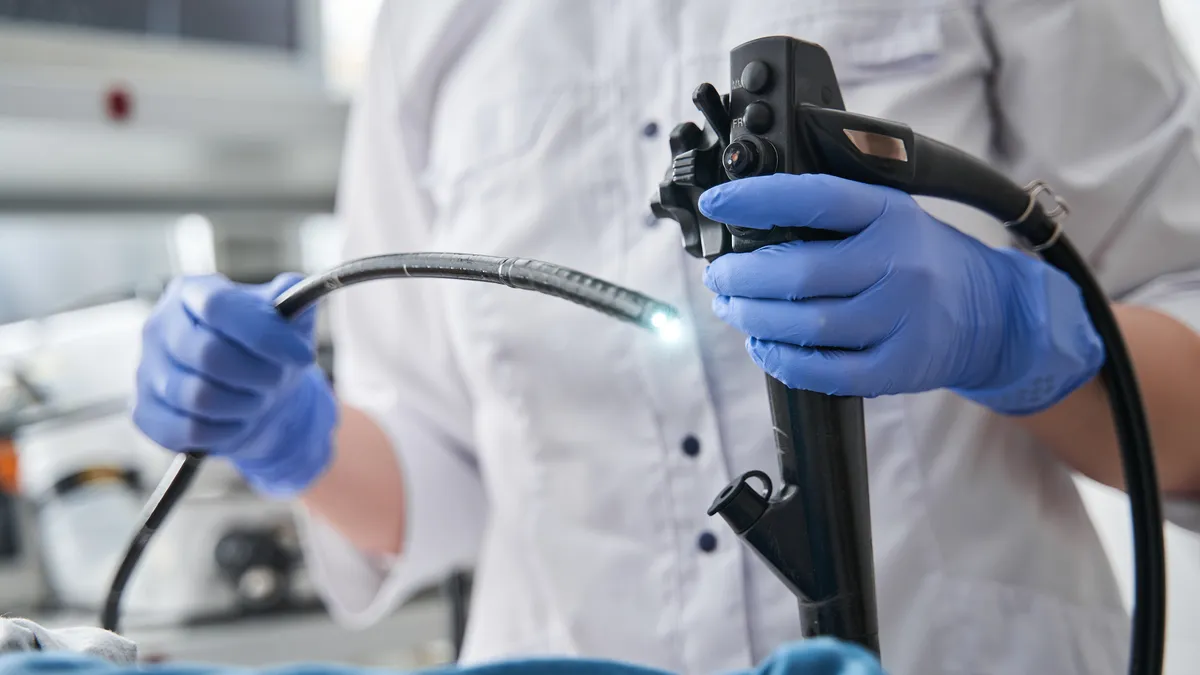Dive Brief:
- Olympus Medical has been accused by the Food and Drug Administration of “a troubling disregard for patient safety” after an inspection revealed quality failings related to endoscope production.
- In a March 15 warning letter, the FDA outlined Olympus’ response to complaints about single-use parts for duodenoscopes and bronchoscopes, including a complaint that “cracked caps” caused a patient to suffer “esophageal trauma.”
- The notice comes months after the agency issued two other warning letters to Olympus and its Aizu subsidiary, leading the director of the center for Devices and Radiological Health to describe the company’s “continued failure” to meet the requirements as a patient safety issue.
Dive Insight:
Olympus identified disposable endoscopy devices as a key part of its revised strategy in 2019. Last year, the FDA found that as many as 6.6% of Olympus’ devices with a fixed endcap design tested positive with high concern organisms after contamination, leading it to push hospitals to use devices that have disposable components or are fully disposable.
However, the company has run into issues with the execution of that plan and the FDA identified the problems when its inspectors visited Olympus’ site in Tokyo late last year, the agency said in the letter.
The inspection found fault with Olympus’ endoscopes and endoscope accessories, including single-use distal covers for duodenoscopes and single-use suction valve accessories for bronchoscopes. According to the regulator, the company is noncompliant with current best practices in manufacturing requirements.
In the resulting warning letter, the FDA said Olympus has received about 160 complaints that its distal end cover has “dropped out” since November 2020. Olympus allegedly found that the number of complaints was higher than expected, while its subsequent actions failed to satisfy the FDA, which accused the firm of not considering the risk of injury from navigating the gastrointestinal tract with an uncovered scope tip.
The agency found a November 2020 complaint that “a patient sustained esophageal trauma” and “tissue from the esophagus was caught up in the distal tip of the device.” The customer attributed the events to cracked caps, noting they had seen a “few already cracked when coming out of the packaging.” Olympus investigated the complaint in 2022.
Inspectors also raised concerns about Olympus’ steps to ensure the sterility of its devices. Wrinkles and air bubbles in the package seal of a lot of a sterile product led Olympus to modify its equipment but, according to the warning letter, “no re-validation of the process was made.” Changing Environmental Protection Agency rules on ethylene oxide are reshaping the sterilization market.
The new notice is the third warning letter Olympus has received since November. In the earlier warning letters, the FDA highlighted compliance problems at units that manufacture sterile and non-sterile endoscopes and that make gastrointestinal and surgical endoscopes.










